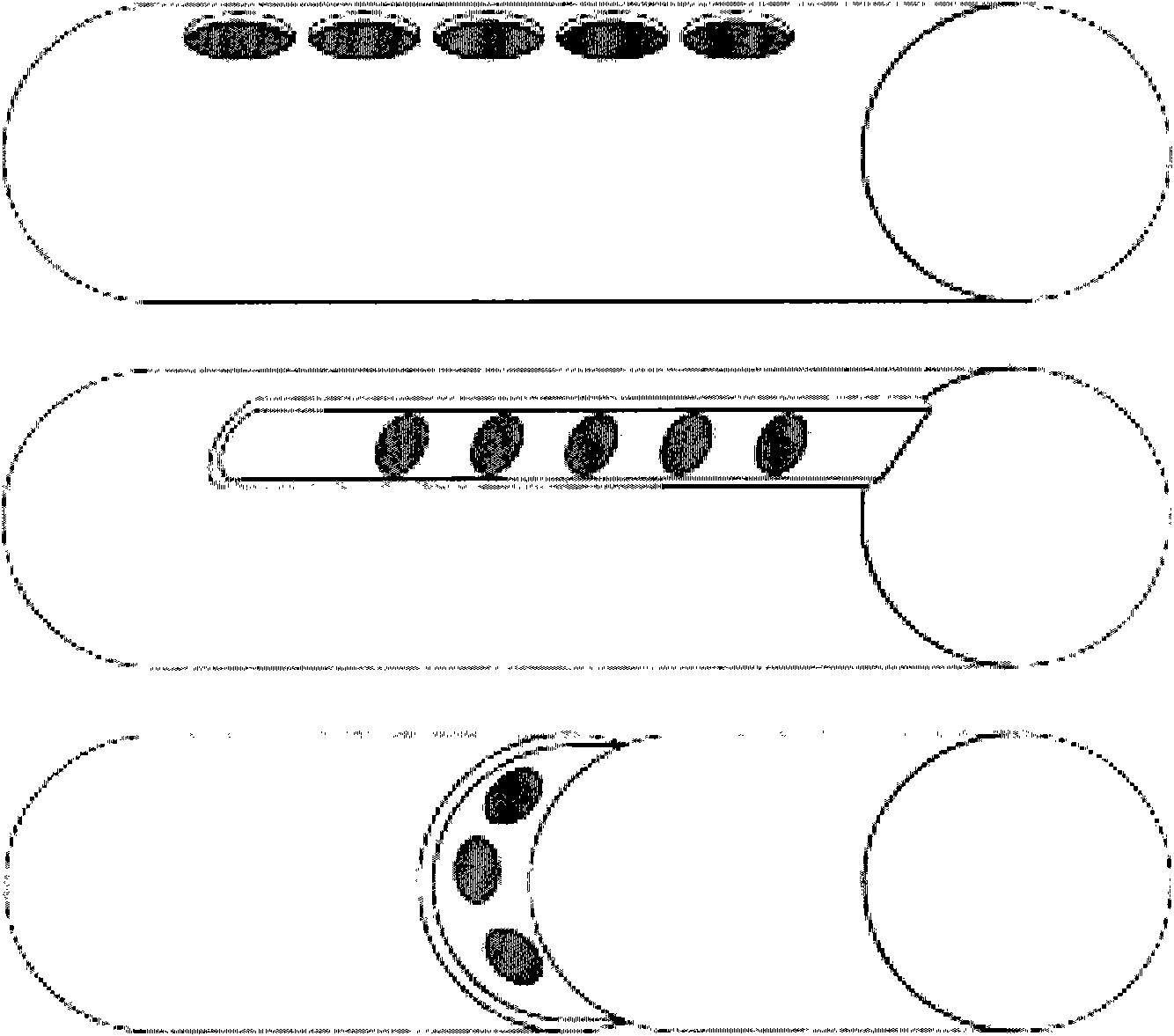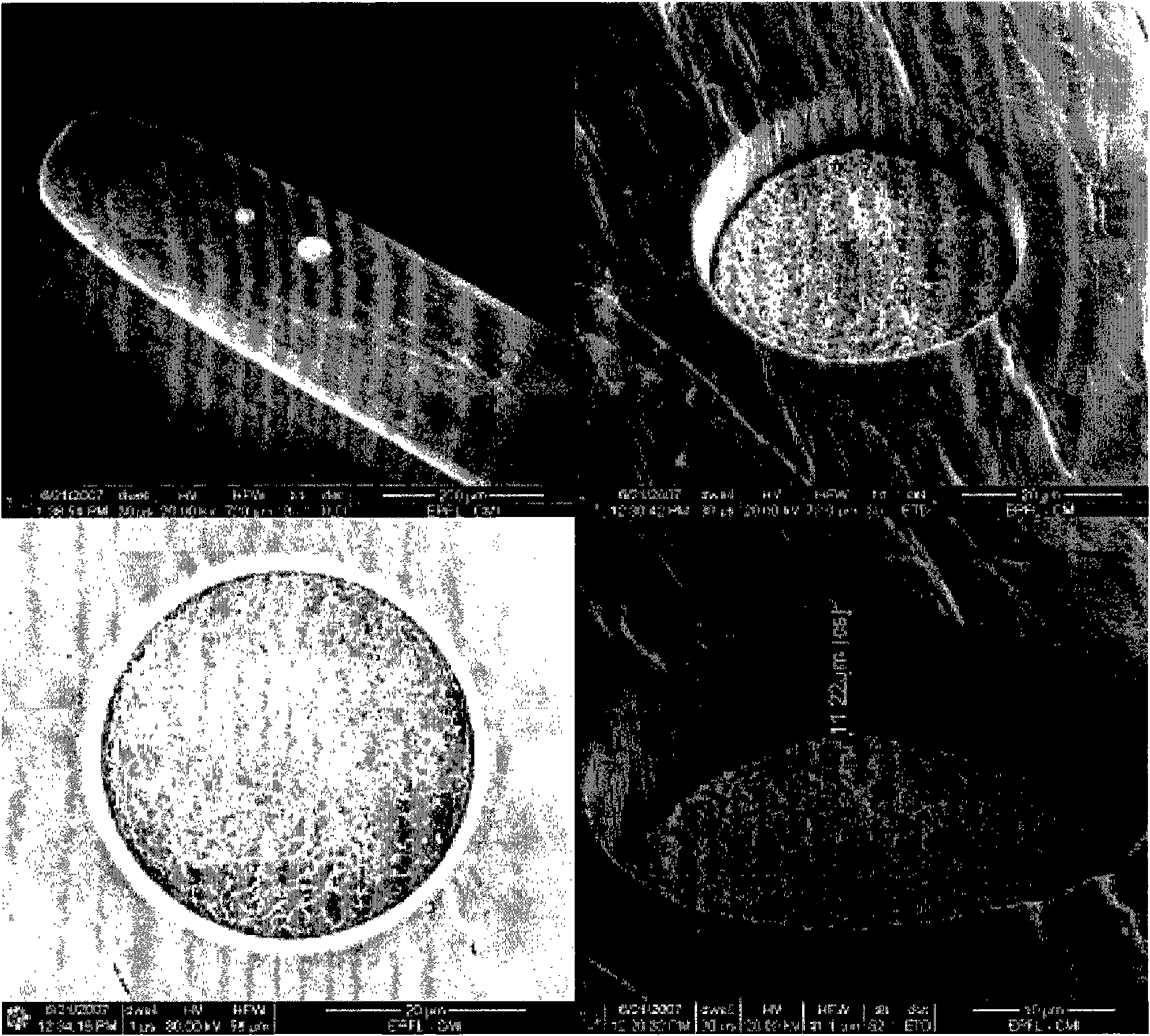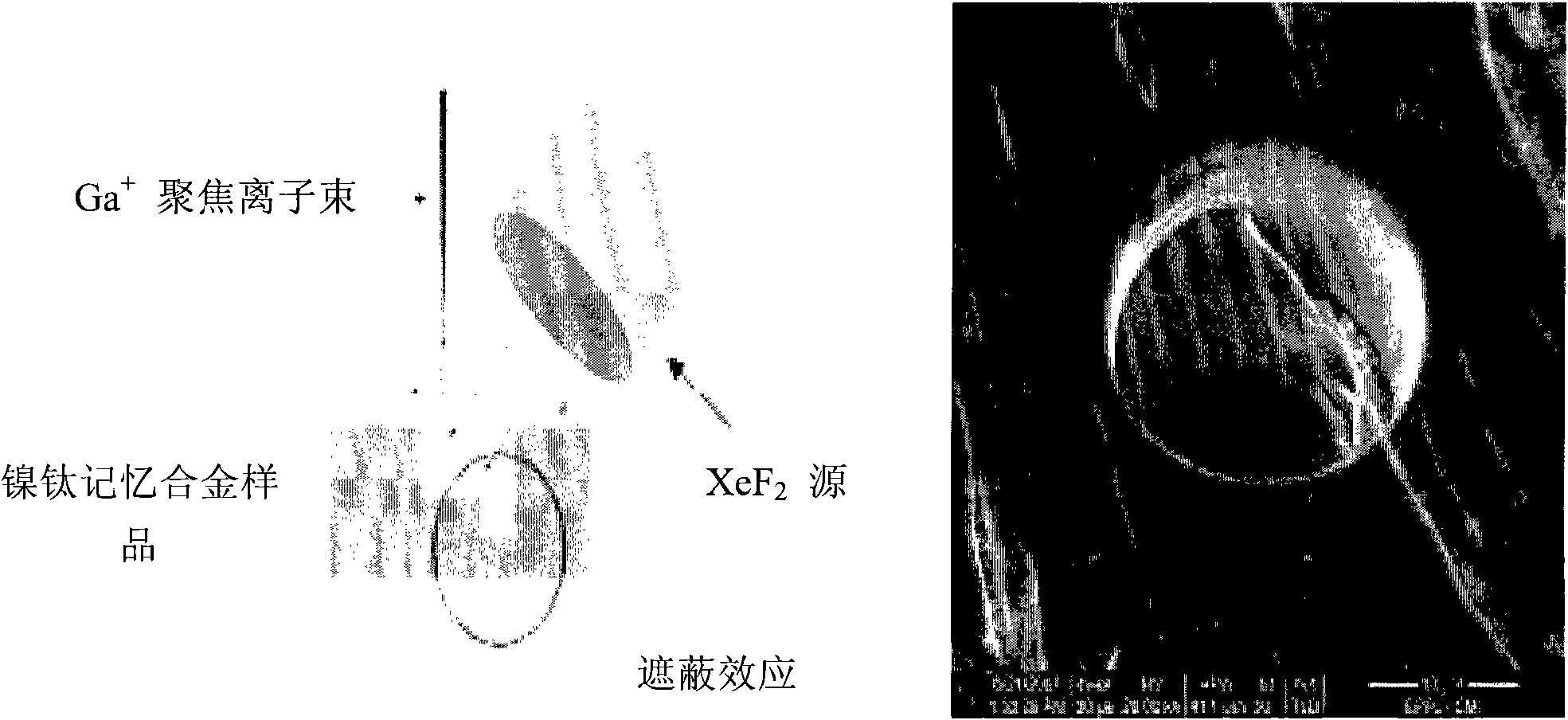In vivo micro-invasive investigation device including a metal guide
A guiding device and equipment technology, applied in the direction of catheter, medical science, diagnosis, etc., can solve the problems of correct direct access to the target site, correct guidance of damage, complex use, etc., to achieve the effect of easy navigation, improved flexibility or elasticity
- Summary
- Abstract
- Description
- Claims
- Application Information
AI Technical Summary
Problems solved by technology
Method used
Image
Examples
Embodiment 1
[0113] Example 1: Manufacture and activation of metal guides based on nickel-titanium memory alloys
[0114] The surface of a nitinol-based metal guide (Euroflex) is structured to have specific sites, such as pores, where reactive groups are placed and where biochemical reactions occur ( figure 1 );
[0115] The "holes" can be obtained using various methods, such as focused ion beam lithography (FIB, Xie et al., Nuclear Instruments & Methods in Physics research Section B-beam Interactions with Materials and Atoms, 211(3): 363-368, 2003 ), by laser lithography followed by electrochemical etching and laser ablation.
[0116] Using FIB technology, a machine produces a beam of ions that is focused onto the surface that must be textured. Under the mechanical action of the ion beam, atoms of the surface material are removed from the surface. At the right time, the 8μm with a beam current of 20nA can be passed by FIB technology 3 the s -1 A hole with a diameter of 20 μm was form...
Embodiment 2
[0121] Example 2: Trauma caused by continuous in vivo insertion of metal guides into specific organs
[0122] A metal microguide (MTI 0.012" Silver speed) was used in these experiments and inserted into a microcatheter.
[0123] The device was introduced into a pig under general anesthesia at the suction level, followed by an intravascular route (via the femoral artery) up to the kidney at the level of the femoral triangle (scarpa). The guide is manipulated by follow-up observation of the device located in the femoral artery by arteriography.
[0124] When the device is at the entrance of the kidney, it can reach the kidney through the invading arterial route. This penetrates a few millimeters deep into the tissue and the device stays there for about 10 minutes.
[0125] Finally, remove the device.
[0126] After puncturing with the device according to the invention, the animals were sacrificed and their kidneys were taken as samples to evaluate their condition.
[01...
Embodiment 3
[0129] Example 3: Minimal invasiveness associated with device insertion in the liver
[0130] Unlike Example 1, the metal microguide used (MTI 0,012"Silver speed) was set in the fiberscope.
[0131] The device was introduced into a pig under general anesthesia at the suction level, followed by an intravascular route (via the femoral artery) up to the liver at the level of the femoral triangle. The guide is manipulated angiographically by said device located in the femoral artery.
[0132] When approaching the liver, the device is introduced into the organ. The puncture is a few millimeters deep into the tissue, and the device remains there again for about 10 minutes.
[0133] Finally, remove the device.
[0134] As previously mentioned, liver samples from this procedure can be used to assess the degree of involvement of this organ by the procedure.
[0135] There was no visible damage to the liver surface. When cut, two hemorrhagic nodes of 1.5 × 0.4 cm and 1.8 × 0.5 cm i...
PUM
 Login to View More
Login to View More Abstract
Description
Claims
Application Information
 Login to View More
Login to View More - R&D
- Intellectual Property
- Life Sciences
- Materials
- Tech Scout
- Unparalleled Data Quality
- Higher Quality Content
- 60% Fewer Hallucinations
Browse by: Latest US Patents, China's latest patents, Technical Efficacy Thesaurus, Application Domain, Technology Topic, Popular Technical Reports.
© 2025 PatSnap. All rights reserved.Legal|Privacy policy|Modern Slavery Act Transparency Statement|Sitemap|About US| Contact US: help@patsnap.com



